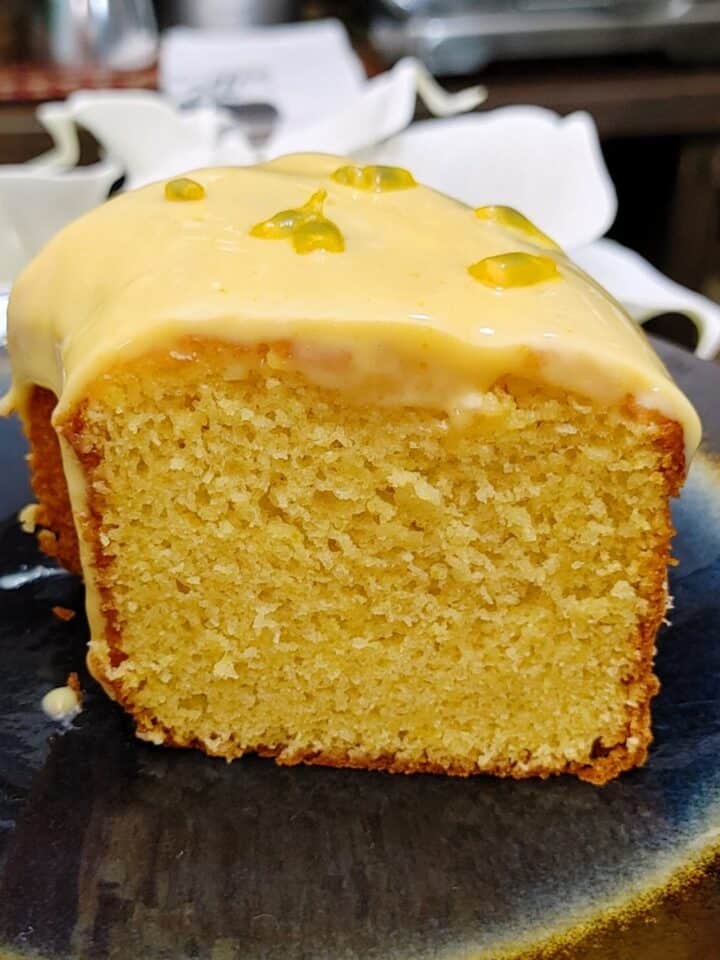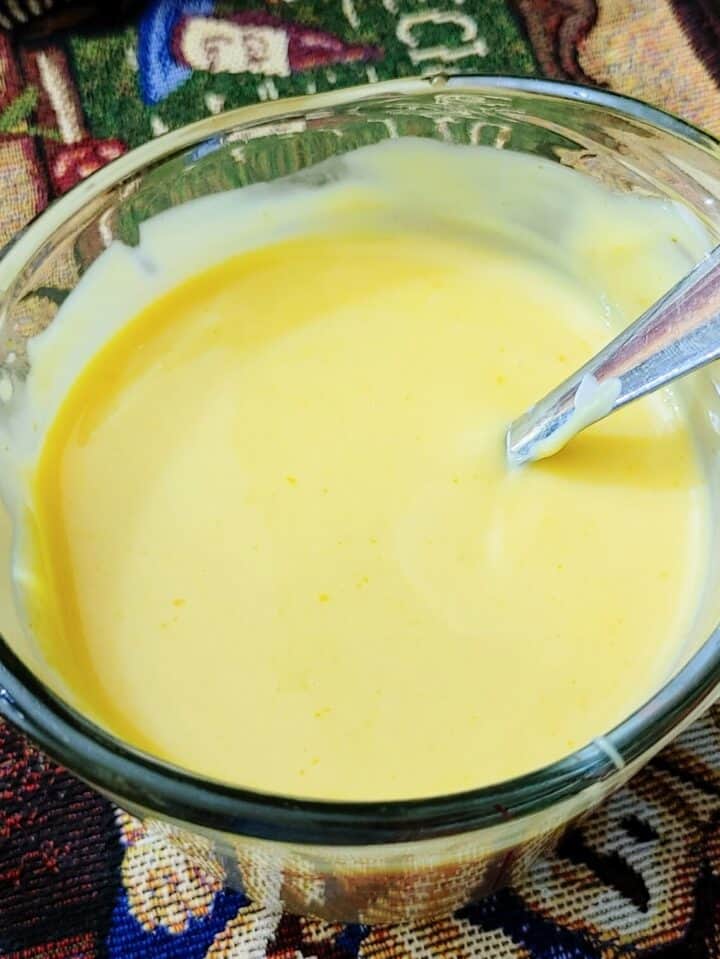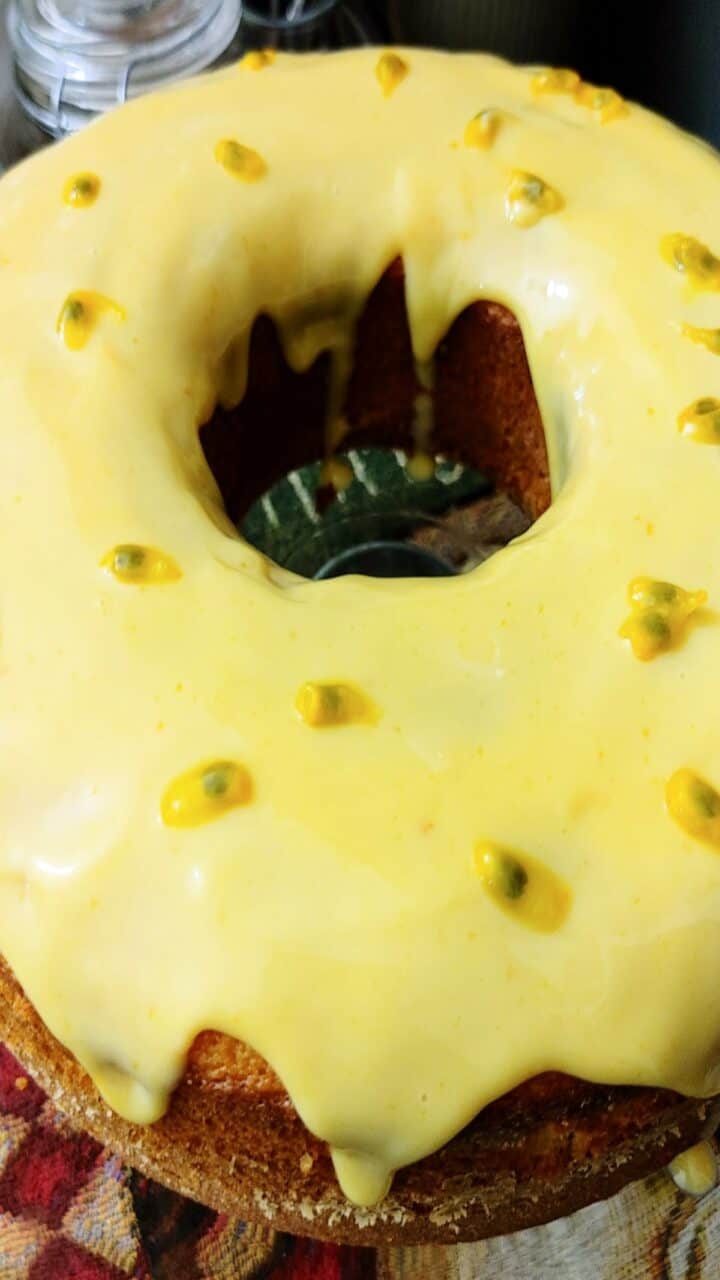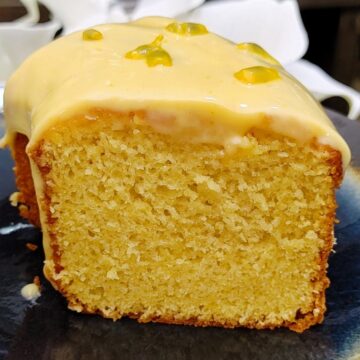Today, I'm sharing my family's all-time favorite Passion Fruit Cake, "Bolo de Maracuja." Made with natural passion fruit pulp and glazed with a rich combination of condensed milk and passion fruit for a double dose of sweet tanginess.
Our passion fruit cake recipe is easy to make, moist, and delicious; this will be one of your favorite passion fruit cakes! 🎂😋
How to Make Passion Fruit Cake
Note: The full instructions are provided in the recipe card below.
Preheat the oven to 350 degrees F. Generously butter a nonstick 12-cup Bundt pan. Sift the flour and the baking powder into a medium bowl.
Beat the oil and the granulated sugar in a bowl with a mixer on medium-high speed until combined, at least 3 minutes, scraping down the sides of the bowl with a rubber spatula as needed.
Reduce the mixer speed to low; beat the eggs one at a time, then beat the vanilla. Add about one-third of the flour mixture and half the passion fruit; beat until almost incorporated. Add another one-third of the flour mixture and the remaining passion fruit.
Beat, scraping down the sides of the bowl as needed until just combined. Add the remaining flour mixture and beat for 30 seconds. Finish incorporating the flour by hand to avoid overmixing.
Pour the batter evenly into the prepared pan; smooth the top. Bake until the cake is golden brown, and a toothpick inserted into the center comes out clean, 45 to 50 minutes.
Transfer to a rack and let cool in the pan for 30 minutes. Run a small sharp knife around the edge of the pan to loosen the cake, then invert it onto the rack to cool completely.
How to Make Passion Fruit Glaze
Whisk the condensed milk and 8 tablespoons of passion fruit pulp in a bowl; if the glaze is too thick, whisk in up to 1 more tablespoon of passion fruit pulp, a little at a time.
Pour the glaze over the cake, letting it drip down the sides, and spoon the Maracuja seeds for garnish. Enjoy!
Related Recipes:
- Vanilla Sheet Cake
- Coconut Sheet Cake
- Nesquick Chocolate Cake with Brigadeiro
- Brazilian Carrot Cake “Bolo de Cenoura com Brigadeiro”
- Self Rising Cake
- Coconut Cake
Recipe
Easy Passion Fruit Cake
Tools
Ingredients
For the Passion Fruit Cake:
- ¾ cup avocado oil or 2 sticks unsalted butter , softened
- 400 g (3 cups) all-purpose flour, sifted
- 20 g (1 tablespoon baking powder plus 1 ½ teaspoons) baking powder
- ¼ teaspoon kosher salt
- 400 g (2 cups) Granulated Sugar
- 3 eggs , room temperature
- 8 oz (1 cup) unsweetened passion fruit pulp such as Goya
For the Passion fruit & Condensed milk Glaze:
- 8 tablespoons Goya passion fruit pulp
- ½ cup condensed milk (full-fat)
- 1 Passion Fruit , for garnish
Instructions
- Preheat the oven to 350 degrees F. Generously butter a nonstick 12-cup Bundt pan. Sift the flour and the baking powder in a medium bowl.
- Beat the oil and the granulated sugar in a bowl with a mixer on medium-high speed until combined, at least 3 minutes, scraping down the sides of the bowl with a rubber spatula as needed.
- Reduce the mixer speed to low; beat in the eggs one at a time, then beat in the vanilla. Add about one-third of the flour mixture and half of the passion fruit; beat until almost incorporated.
- Add another one-third of the flour mixture and the remaining passion fruit. Beat, scraping down the sides of the bowl as needed until just combined.
- Add the remaining flour mixture and beat for 30 seconds. Finish incorporating the flour by hand to avoid overmixing.
- Pour the batter evenly into the prepared pan; smooth the top. Bake until the cake is golden brown and a toothpick inserted into the center comes out clean, 45 to 50 minutes. Transfer to a rack and let cool for 30 minutes in the pan. Run a small sharp knife around the edge of the pan to loosen the cake, then invert it onto the rack to cool completely.
How to Make Passion Fruit glaze
- Whisk the condensed milk and 8 tablespoons of passion fruit pulp in a bowl; if the glaze is too thick, whisk in up to 1 more tablespoon of passion fruit pulp, a little at a time. Pour the glaze over the cake, letting it drip down the sides, and spoon the Maracuja seeds over for garnish. Enjoy!
Notes
All nutritional information is based on third-party calculations and is only an estimate. Each recipe and nutritional value will vary depending on the brands you use, measuring methods, and portion sizes per household.




